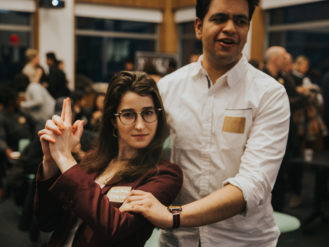Meet the Wizard Who’s Bringing Back the World’s Fair
Brooklyn's Michael Weiss is scaling up to something big at a Greenpoint expo with drones, droids and a glimpse of the future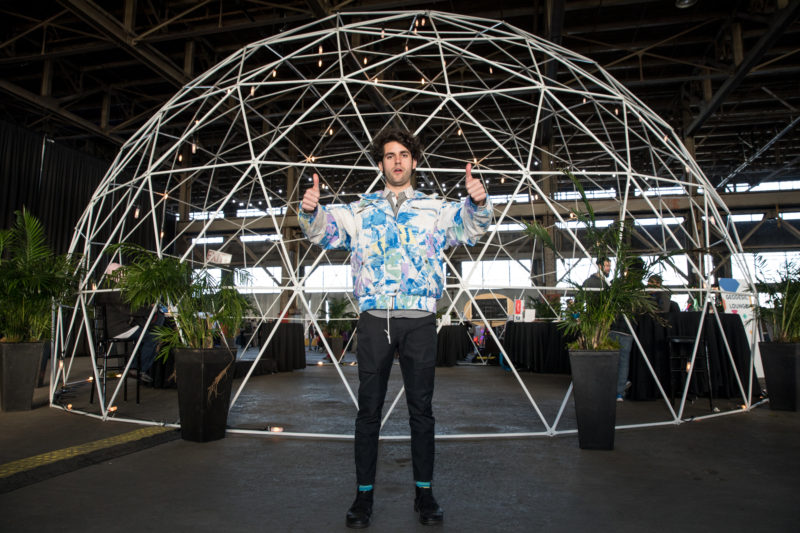
Fair promoter Weiss expects about 10,000 visitors at the Greenpoint installment of his Worlds Fair Nano (Photos by Jamie Soja/Courtesy of Worlds Fair USA)
You may not have been born the last time the World’s Fair was a household name in this country. More than a century ago, it was where innovation met culture and even the reason we live on an electrical grid today. In the last few decades, however, the exposition hasn’t run anywhere in the U.S., while other events have largely taken its place. But if Michael Weiss has anything to do with it, that will change. The 27-year-old event planner wants to bring the World’s Fair back to its former glory as a citadel for futurism where everyone has access.
Through his company, Worlds Fair USA, he launched the first Worlds Fair Nano last year in Manhattan and held a second one in San Francisco in January. He’s bringing it to Brooklyn this Saturday and Sunday, Sept. 16-17, at the Brooklyn Expo Center in Greenpoint and plans to expand to London next. Weiss spoke to The Bridge about his mission to make an old institution new again:
It’s been since 1964 that we’ve had a World’s Fair in New York. Why is Brooklyn the place to bring it back?
Well, to give you a little context, the last American World’s Fair was in 1984 in New Orleans. Most people don’t know that. The last World’s Fair people remember was 1964-65 in New York at Flushing Meadows-Corona Park when they built the Unisphere, and people got to try videoconferencing for the first time, and the Ford Mustang was unveiled. So [for] our company, our long-term goal is to organize a six-month, 100-million-person World’s Fair in the U.S., just like back in the day.
The way that we’re planning to get there is by organizing a series of smaller World’s Fairs, which is what Worlds Fair Nano is, and grow it from two days [and] 10,000 people to six months [and] 100 million people, eventually. It’s funny–very few Americans know World’s Fairs still happen every five years around the world and they’re known as World’s Expos. Shanghai hosted the expo in 2010, Milan in 2015, Dubai is hosting in 2020.
The trick with the U.S. is that in 2001, our government cancelled its membership in the international organization that oversees these World’s Fairs in the present day, which is why they’re just irrelevant to Americans now. So we’re history’s first privatized World’s Fair effort. Because there’s no government focus on them, it really has to happen in the private sector and that’s what we’re trying to do with Worlds Fair Nano. [In May, President Trump signed a bipartisan bill to rejoin the group to enable the U.S. to organize a fair.]
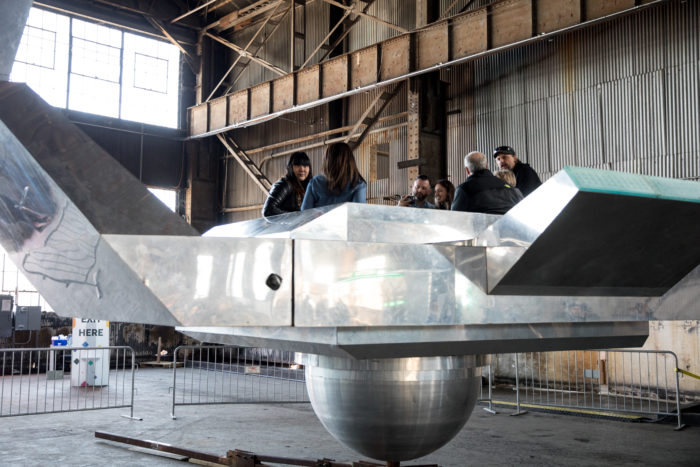
Worlds Fair Nano features physical devices and gizmos, typically with an underlying digital component
There are all types of events like this already, from South by Southwest to the Consumer Electronics Show. Why specifically do we need to bring back the World’s Fair?
It’s crazy. There are events like SXSW, TED Conference, TechCrunch Disrupt, CES, even some of the film festivals. Burning Man to some extent. But the trick is if you really take all those events, where you can have a futurist experience, it’s a very small portion of the world who actually gets to go to these things because they’re very, very expensive and/or industry specific. So to go to SXSW, it’s [as much as] $1,300 for a badge. To go to TechCrunch disrupt, it’s thousands of dollars. CES, you have to be in the industry to go. So what happens is it’s the same million or less people every year who get to go to these events and engage with the future, and learn the future. It sucks that more people don’t get to experience the future.
What the World’s Fair was for a very long time was the place where 51 million people in 1964-65 went to experience the future. It was the place where in 1893 in Chicago, 27 million people, 42% of the entire country, traveled to experience the future. Our goal is exactly that: to open up the future to a much broader group of people to go to Worlds Fair Nano and try out all these omnidirectional treadmills and and try drones or listen to U.S. senators or big entrepreneurs. It’s fifty bucks, which in my opinion would help democratize access to inspiration and to the future.
You could have brought this back to Queens or Manhattan, there’s a lot of space in the Bronx. What was the appeal of Greenpoint, Brooklyn?
We live and work off the Graham Avenue L-train stop. It’s funny, I’ve lived in New York for years and I found myself coming to Brooklyn more and more. It’s very clear to me that the artistic and creative epicenter of New York City is Brooklyn. With New York City being, in my opinion, the greatest city on earth, that made Brooklyn the pinnacle creative and artistic community on planet earth.
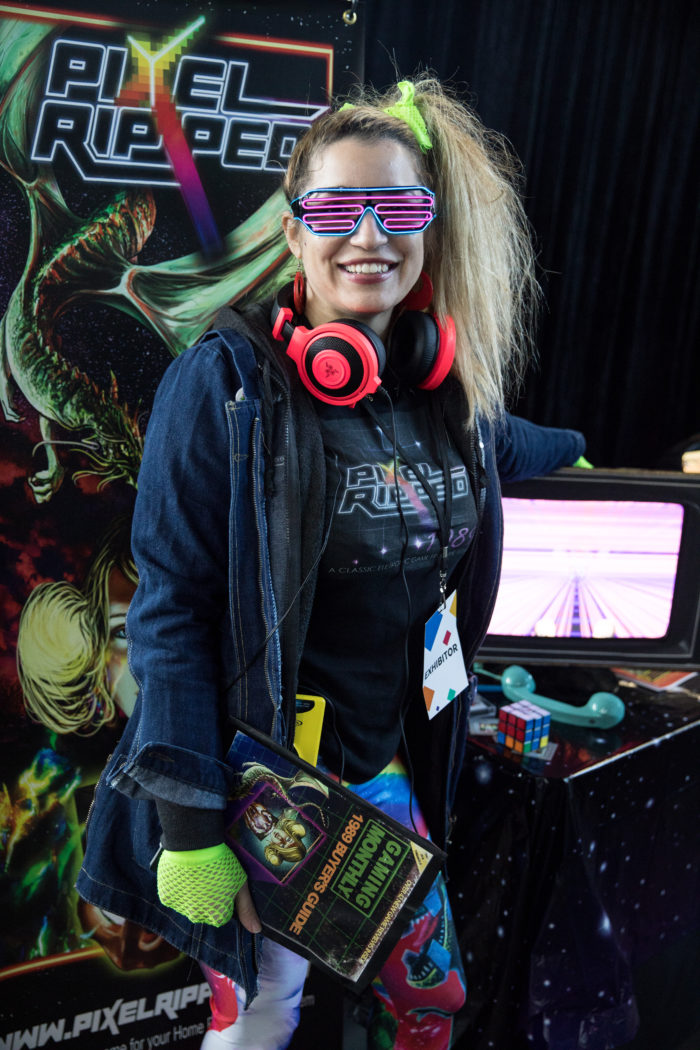
Sights, sounds and games abound among the dozens of exhibits
For many years, the term World’s Fair had a brand, so to speak. Do you think that this will assume the brand that the original event had a long time ago?
That is the goal. The brand of the World’s Fair a long time ago was an opportunity for everybody to experience the future and gain inspiration and hope for how epic the world could be. That was really the brand. It was something that welcomed every single person on earth and gave them a chance to be a part of the future. With Worlds Fair Nano, and our goal of a six-month World’s Fair in the U.S., we’re hoping to mimic that. We want to be the place that provides people with this resource of inspiration.
Looking at the history of the exposition, it seemed to follow global industrialization. But it’s 2017 now, and it’s the digital age, so things are taking a different path. Do you think Worlds Fair Nano will follow suit?
If you really look at the full history of World’s Fairs, they’ve really undergone three eras. The first era was with the first World’s Fair in London in 1851, so the next about 70 years was the industrialized World’s Fair. It was about cars and the first electrical outlet and the Ferris wheel and the Eiffel Tower, it was about building and invention. Then the next era of World’s Fairs is viewed as an era of cultural exchange and it was during the time of globalization. Then the current era, known as World Expos, is really about nation branding. Countries host the World’s Expo today hopefully to become like the cooler kid at the country table, so to speak, which I don’t really like. So yes, the essence of a World’s Fair is that excitement for invention. You could call it industrialization or whatever, to me it’s just invention.
It’s [about] being excited to bring new possibilities into the world. So with our event right now, as far as digital vs. physical invention, we’re focusing mostly on physical stuff because at the end of the day, if the future isn’t fun, who’s going to want it? It’s not that much fun to play with a new digital platform, but it is really fun to get your hands on a 3-D pen or drone or ride an electric skateboard or sit in a solar powered car, which is all stuff we’re having at Nano. So right now we focus mostly on physical products, but they all have pretty robust digital components to them.
You have a few futurists giving us a preview of the next 50 years. You’ve got people like [Wearable X CEO] Billie Whitehouse and [AeroFarms co-founder] David Rosenberg and even [comedian and Star Talk futurist] Chuck Nice. What are they and others going to tell us?
The speaker series is pretty awesome. The point of it is to excite people about these specific futures and we do that by finding people like David Rosenberg or [Foursquare chairman] Dennis Crowley or [Digital Citizen Fund CEO] Roya Mahboob, who are navigating for specific futures or really getting into sharing with the audience why it’s exciting for everybody if we shift to vertical farming or if we have flying cars in the world or the future of dating [laughs]. It’s just a dynamic speaker series. The point of it is we try and choose topics that are relevant to really everybody and find people who are making those futures a reality to share in an exciting way why that world is better.
At the same time, you’ve got people grounded in the present like the New York Public Library’s Anthony Marx and Brooklyn Borough President Eric Adams. Are they going to tell us what our current institutions will look like?
Yes, I spoke with Anthony myself and he said 40 million people a year walk into the New York Public Library system, which is just mind-blowing. From his perspective, that’s an amazing thing that [the library is] a touchpoint for 40 million people, so what do you do with that? I don’t want to put words in his mouth, but I think he views libraries as a place for people to find education. With Anthony: What are the future of libraries in the digital world? Why are libraries so important? Why are they still relevant?
With Borough President Adams: The future of Brooklyn. Why is Brooklyn so epic? He obviously has his finger on the pulse of what it means and he has his own vision of how it can become more exciting. That is the point: To just excite people about what it is today and what it can become tomorrow.
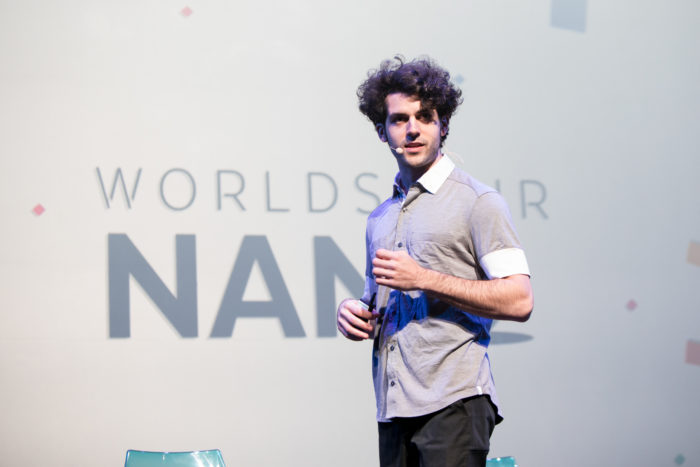
Weiss is an evangelist for his cause, with earlier versions of his expo in Manhattan and San Francisco
I noticed that you’ve also got the android Bina48. Are we going to be creeped out by such a realistic look at artificial intelligence?
Bina48 is amazing. She’s based off of the mindfile of a real-life woman named Bina. They took the memories, experiences, perspectives. They took hours of recorded footage and text messages and e-mails and they uploaded it into this robot neural net named Bina48 to create almost a human-specific version of [Amazon’s] Alexa. I don’t know if you’ve seen the videos online, but talking to Bina48 is kinda like talking to the real life Bina. She’s one of the world’s most socially advanced, artificially intelligent robots. She, as far as I know, is in the process of co-authoring a book, actually.
The title of her talk is The Future of Artificially Intelligent People and Us. It will be more of a demo, but it seems evident that the time is fast approaching when human beings are going to co-exist with artificial beings and Bina48 is a pretty amazing example of that future, which I hope serves to inspire people as opposed to creeping them out.
Does that mean I’ll be able to upload my brain into a robot and have it do all my work for me?
[Laughs] That might be the goal. I don’t know if the grand vision is to get work off our plates, but some people like the idea of something like Bina48 to live forever. You’re you, and your consciousness is “X,” whatever “X” is, and if we can upload your consciousness to a pseudo-biological being like her, perhaps you can in that vessel truly live forever. I don’t know.
I’m with it, because I could go off to the Bahamas and go Scuba diving, man.
Yeah, that’s what I’m saying.
All in all, this will create a space for innovation in tech that we rarely see. So what’s everybody going to come out having learned?
Each one of 10,000 people comes away with something different. Someone falls in love with virtual reality, someone falls in love with drones, someone falls in love with future food, someone falls in love with Bina48–maybe literally. It’s so much future and every person is unique, so I can’t know what specifically gets taken away, but my great hope is that people come away more excited to live their lives, and more excited for the future that they are going to be a part of.





